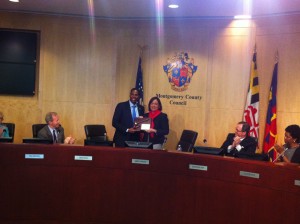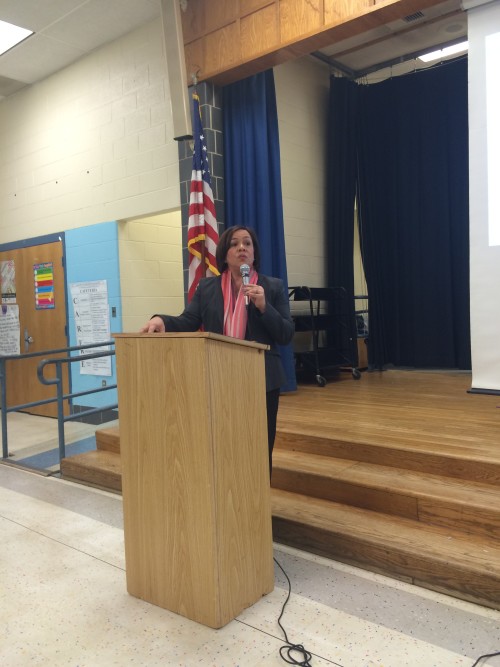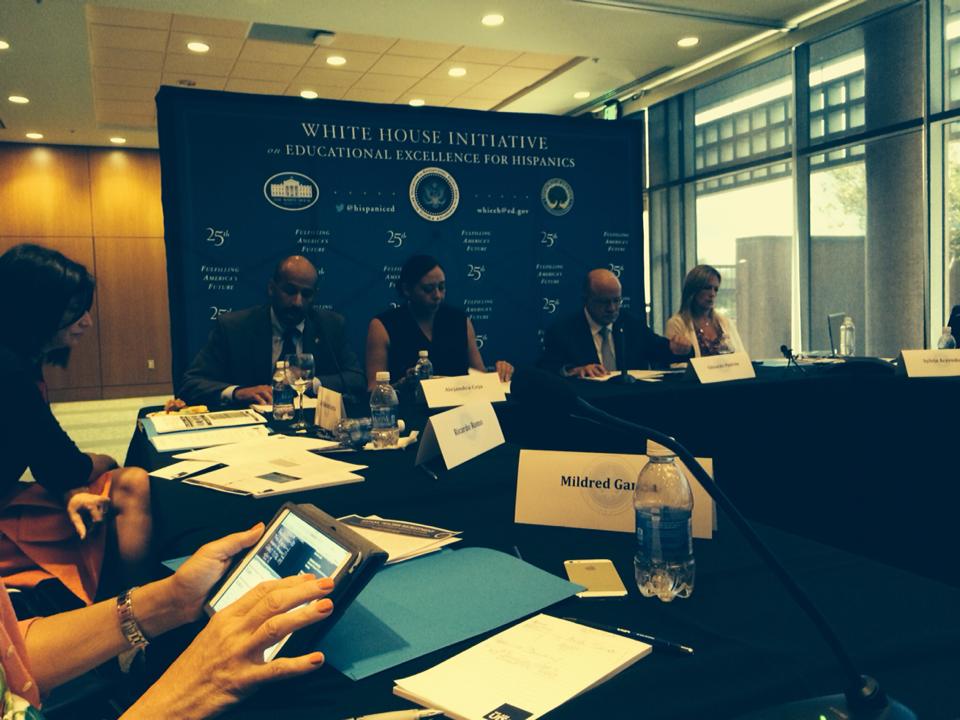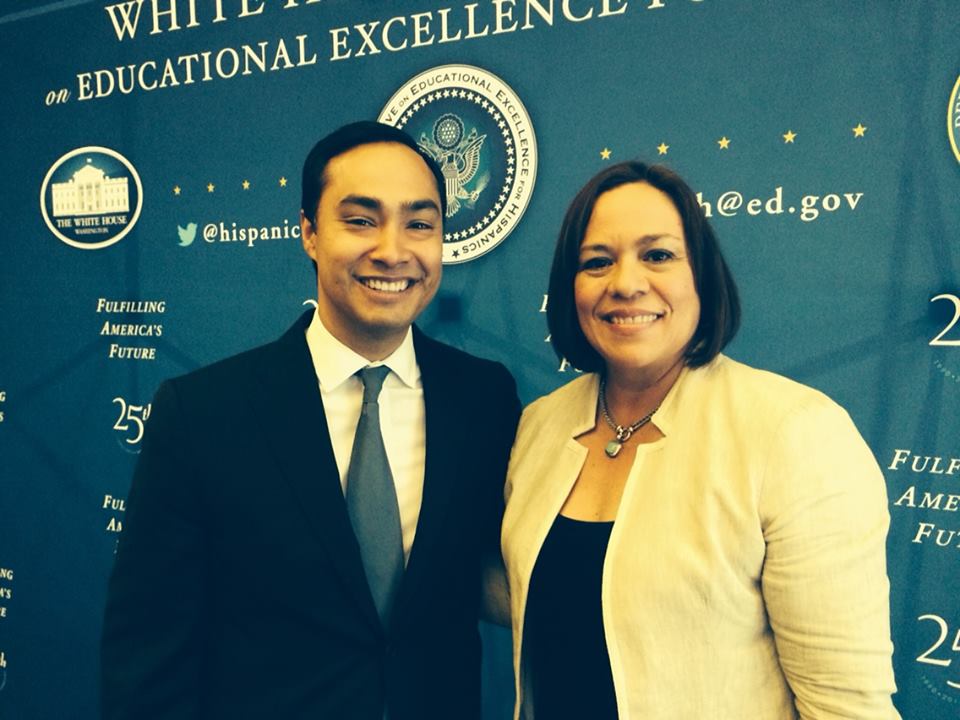This morning marked the end of my one-year term as Council President. This year, the Council accomplished a great deal. We maintained our fiscal responsibility by passing a balanced budget, invested in our future by fully funding our  schools, and helped our most vulnerable residents by raising the minimum wage. We strengthened support services for our seniors, passed legislation protecting our environment, and made government more accessible for our residents. We also strengthened our relationship with our delegation in Annapolis by advocating for the successful transportation funding bill that will provide the resources for Montgomery County’s transit priorities.
schools, and helped our most vulnerable residents by raising the minimum wage. We strengthened support services for our seniors, passed legislation protecting our environment, and made government more accessible for our residents. We also strengthened our relationship with our delegation in Annapolis by advocating for the successful transportation funding bill that will provide the resources for Montgomery County’s transit priorities.
Thank you to my colleagues for giving me this opportunity to serve. I look forward to working with newly elected Council President Craig Rice and Vice President George Leventhal. As I look back at the past year, I can’t help but marvel at all the things the Council has accomplished together.
Accomplishments of the Montgomery County Council
December 2012—December 2013
Maintaining Fiscal Responsibility: As the economy continued to recover from the Great Recession, the Council made smart fiscal decisions to keep our economy moving in the right direction. The three major credit rating agencies acknowledged these decisions by reaffirming Montgomery County’s AAA bond rating. In the Fiscal Year 2014 budget, the Council kept its promise to lower the fuel / energy tax by an additional 10 percent, bringing the two-year total reduction to 20 percent. The Council also provided raises for the County’s dedicated workforce for the first
Investing in our Future: The Council fully funded the Board of Education’s FY14 budget request for Montgomery County Public Schools (MCPS). It approved an additional $280 million in funds outside the MCPS budget to serve students and their families. These additional services include debt service on school construction bonds, pre-funded retiree health benefits, and support services, such as school health nurses, crossing guards, technology modernization, and after school programming. The Council also released a report by the Office of Legislative Oversight on the academic achievement gap, strengthened the Kennedy Cluster Project and expanded funding for Excel Beyond the Bell. In addition, the Council supported increased funding for Linkages to Learning, school-based Wellness Centers, and the popular Teen Escape Club program.time in several years.
Strengthening the Social Safety Net: Helping our most vulnerable residents was a key priority for the Council this year. The Council increased the County Executive’s recommendation for the Department of Health and Human Services by $5 million, including a 3 percent cost-of-living adjustment for nonprofit service providers. It passed resolutions calling for the state to increase the minimum wage and reaffirming the Council’s commitment to anti-poverty and safety net programs.
The Council increased funding for the Student/Teen Employment Program, increased staffing for the anti-gang Street Outreach Network program, and added additional resources for the Department of Recreation to support at-risk youth. It provided additional funding to reduce the waiting list for the Montgomery Coalition for Adult English Literacy (MCAEL), increased resources for the Working Parents Assistance Child Care Subsidies Program, and expanded food recovery efforts. In the FY14 budget, the Council funded the Working Families Income Supplement at the highest level since the Great Recession. Most significantly, the Council made history by becoming the first county in the nation to raise its minimum wage. By 2017, the minimum wage in Montgomery County will be $11.50, among the highest in the nation.
Supporting our Seniors: The Council significantly increased funding for a variety of senior programs in the FY14 budget. For the first time, the Council established a Senior Mobility Manager position in County Government and provided additional funds to the Public Information Office to promote senior transportation options. The Council also increased funding for mental health services for seniors and continued its support for senior recreation activities.
Protecting our Environment: The Council passed important legislation to protect our environment this year. It passed legislation preserving trees in the County right-of-way and requiring the replacement of trees destroyed through development. The Council also updated the Water Quality Protection Fee to now include commercial properties, but reduce the rate for most residential properties. The Council also approved funding to bring bike-sharing to Montgomery County.
Promoting Open Government and Access for All: Last year, the Council launched an initiative to better communicate with our constituents. Since then, it has procured a new constituent management database, hired bilingual public information officers, and improved its technology infrastructure. The Council launched the first Council E-Newsletter and will modernize its website in the coming year. The Office of Legislative Oversight developed the first “Interactive Fiscal Model” so residents can review and weigh the budget decisions the Council makes each year. For the first time, residents were able to testify at public hearings in a language other than English, with real-time closed caption translation. The Council also held an unprecedented four nights of public hearings on the Zoning Code Rewrite, where it heard from hundreds of residents about a range of issues. Finally, the Council passed the Right to Vote resolution, creating a Right to Vote Task Force—a citizen group that will recommend ways to increase participation and promote greater access to the democratic process for our residents.
Focusing on Economic Development: The Council had one of the most ambitious master and sector plan schedules in recent memory. One of the most significant accomplishments of the term was passing the Countywide Transit Corridors Functional Master Plan, calling for Bus Rapid Transit (BRT) with dedicated lanes along many of Montgomery County’s most congested roadways. This plan sets the stage for a high-quality transit network that will accommodate the expected regional growth over the next few decades. The Council also approved several plans in anticipation of the Purple Line, such as the Chevy Chase Lake Sector Plan and the Long Branch Sector Plan. The Glenmont Sector Plan and Burtonsville Crossroads Neighborhood Plan, which were also approved this year, are two examples of the Council working with our state delegation to designate “Enterprise Zones” in areas to complement land-use decisions.
Working with Annapolis: The Council’s partnership with the Montgomery County Delegation in Annapolis was strengthened this year. The Council was outspoken in its advocacy for the ultimately successful Transportation Infrastructure Investment Act, which will raise more than $650 million for Montgomery County to build the Purple Line, Corridor Cities Transitway and other County transportation priorities. This landmark transportation bill is expected to raise more than $4.4 billion statewide over the next six years. The Council also passed a resolution calling for stronger gun control in the wake of the Sandy Hook school shooting, and the Governor and General Assembly responded by passing the most sweeping gun control legislation in the nation.
Remarks by Council President Navarro
December 3, 2013
“The theme of my speech when I was elected president last year was ‘One Montgomery.’ I talked about the need for us to confront the social and economic challenges our County was facing head on. I said that now—more than ever before—we must be in this together. That we all share the same need for a government that encourages economic growth, protects our families, educates our children and provides a safety net for those who fall on hard times. . . .
“‘One Montgomery’ means investing in our economic infrastructure so we can continue to strengthen our social infrastructure. It means providing equal opportunity to all of our 1 million plus residents—throughout our 500 square miles . . .
“One of the initiatives I felt most passionately about this year is increasing access to the government for our constituents. Too many of our residents either don’t know how to access government or find it difficult to navigate the system. Last year, we set aside funds for the first time with the goal of increasing communications with our residents. This year, we continued that effort by establishing a new constituent management system, hired full-time bilingual public information support and significantly upgraded our technology infrastructure. We also, for the first time, allowed non-English speakers to testify at public hearings with real-time closed-caption translation. Finally, we held an unprecedented four nights of public hearings, where we heard from hundreds of residents, about the ongoing Zoning Code Rewrite. . . .
“One of my top goals this year was to strengthen our relationship with our delegation in Annapolis. It is powerful when the Montgomery County Government and our State Delegation speak with one voice. This was evident in our advocacy for the successful passage of a transportation financing bill that will provide more than $650 million to Montgomery County to build the Purple Line, the Corridor Cities Transitway and other top transportation priorities. . . .
“The question we ask ourselves each year is this: are we better off today than we were one year ago? Did we accomplish what we sought to? Did we serve the interests of our constituents? Did we make progress for our community? My view is that we will look back on this year as one of transformation. This year, we served our neediest residents, we set the stage to fundamentally reshape our transit infrastructure and we made the investments in our future that will pay dividends for years to come. Montgomery County is stronger today than it was a year ago and I have every bit of confidence that we will continue to make progress and move forward as One Montgomery.”
 had a great conversation about some of my top priorities for the area, including: the Wheaton Library and Recreation Center, Wheaton Redevelopment, and the renovation of Kemp Mill Urban Park. We also discussed a number of other important issues, including deer management, resurfacing of roads, and WSSC billing issues.
had a great conversation about some of my top priorities for the area, including: the Wheaton Library and Recreation Center, Wheaton Redevelopment, and the renovation of Kemp Mill Urban Park. We also discussed a number of other important issues, including deer management, resurfacing of roads, and WSSC billing issues.


 We need wholesale reform of how Montgomery County ensures that every family has access to high-quality, affordable child care. I am working with my colleagues on legislation creating a Child Care and Early Education Officer within the Department of Health and Human Services (HHS).
We need wholesale reform of how Montgomery County ensures that every family has access to high-quality, affordable child care. I am working with my colleagues on legislation creating a Child Care and Early Education Officer within the Department of Health and Human Services (HHS).


